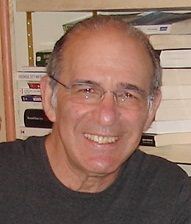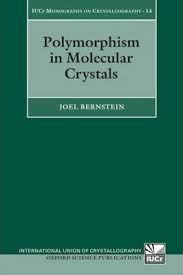 Joel Bernstein was born on September 12, 1941 in Cleveland, Ohio, son of Philip and Florence Bernstein. He obtained his B.A. degree in chemistry from Cornell University (1962), M.Sc. (1964) and Ph.D. in physical chemistry (1967) from Yale University with Prof. Basil G. Anex, working on the solid-state spectroscopy of organic compounds. Following two-year postdoctoral stints in X-ray crystallography with Ken Trueblood at UCLA and in organic solid-state chemistry with Gerhardt Schmidt at the Weizmann Institute of Science, he joined the Department of Chemistry of the newly established Ben-Gurion University of the Negev. Later he became the Barry and Carol Kaye Professor of Applied Science at Ben-Gurion University.
Joel Bernstein was born on September 12, 1941 in Cleveland, Ohio, son of Philip and Florence Bernstein. He obtained his B.A. degree in chemistry from Cornell University (1962), M.Sc. (1964) and Ph.D. in physical chemistry (1967) from Yale University with Prof. Basil G. Anex, working on the solid-state spectroscopy of organic compounds. Following two-year postdoctoral stints in X-ray crystallography with Ken Trueblood at UCLA and in organic solid-state chemistry with Gerhardt Schmidt at the Weizmann Institute of Science, he joined the Department of Chemistry of the newly established Ben-Gurion University of the Negev. Later he became the Barry and Carol Kaye Professor of Applied Science at Ben-Gurion University.
The research interests of Prof. Bernstein focused on organic solid-state chemistry, chemical crystallography, polymorphism, hydrogen bonding, graph sets, structure-property relations in organic solids, organic conducting materials and pharmaceuticals. He is known for using graph sets to describe hydrogen bonding patterns for comparison and understanding the forces governing structural organizations.
 Prof. Bernstein published over 180 research and review articles and book chapters. His well-known book “Polymorphism in Molecular Crystals”, published by Oxford University Press and translated into other languages, has become a highly authoritative reference in its field. He published several landmark papers, such as “Graph-Set Analysis of Hydrogen-Bond Patterns in Organic Crystals”, Angew. Chem., 1995 (4410 citations), “Disappearing Polymorphs” Acc. Chem. Res., 1995 (2971 citations), and “Graph Set Analysis of Hydrogen-Bond Patterns in Organic Crystals”, Acta Cryst., 1990 (1896 citations).
Prof. Bernstein published over 180 research and review articles and book chapters. His well-known book “Polymorphism in Molecular Crystals”, published by Oxford University Press and translated into other languages, has become a highly authoritative reference in its field. He published several landmark papers, such as “Graph-Set Analysis of Hydrogen-Bond Patterns in Organic Crystals”, Angew. Chem., 1995 (4410 citations), “Disappearing Polymorphs” Acc. Chem. Res., 1995 (2971 citations), and “Graph Set Analysis of Hydrogen-Bond Patterns in Organic Crystals”, Acta Cryst., 1990 (1896 citations).
In recent years, he focused on polymorphism of molecular crystals and crystal engineering, using the tools of supramolecular chemistry and the design and preparation of co-crystals of organic molecules. His group made significant progress in developing a successful strategy for the controlled preparation of co-crystals with a pre-designed structure by recognizing and utilizing specific intermolecular interactions. Their studies involved a statistical analysis using the Cambridge Structural Database, high level molecular orbital calculations, and proof-of-concept experiments on prototypical model compounds. Many subsequent experiments, designed to exploit the principles demonstrated by the proof-of-concept experiment, were successful while others produced unknown crystal forms.
Joel served as a consultant to many pharmaceutical companies worldwide, including Leo Pharmaceuticals, Johnson & Johnson, Astra Zeneca, Roche, Organon, Sanofi-Aventis, Eli Lilly, Chemagis, Agan Chemicals, Rechter Gideon, Pfizer Pharmaceuticals, Warner-Lambert Pharmaceuticals, TransForm Pharmaceuticals, Millennium Pharmaceuticals, Abbott Laboratories, SmithKline Beecham, Unipharm, GlaxoSmithKline, Teva Pharmaceuticals, 3M Company, Bethlehem Steel Corporation, and Plantex Pharmaceuticals,. In particular, he served as a testifying witness in litigations on the solid-state chemistry of drugs.
His career was punctuated by visiting professorships at the University of Illinois, Cornell University, University of Minnesota, University of Barcelona, Cambridge Crystallographic Data Centre, Rand Afrikaans University, University of Bologna, University of Johannesburg, Australian National University, and Osaka University. He was a Professor-at-Large at the University of Western Australia, and later became Global Distinguished Professor of Chemistry at New York University Abu Dhabi. In 1999, he was elected a Fellow of the American Association for the Advancement of Science.
Joel was a member of many Editorial or Advisory Boards of scientific journals, including the Israel Journal of Chemistry, Structural Chemistry, Zeitschrift für Kristallographie, Crystal Engineering, Crystal Engineering Communications, Crystal Growth & Design, Journal of Pharmaceutical Sciences, and Oxford University Press/International Union of Crystallography Book Series. He served the scientific community as President of the Israel Crystallographic Society, as the Israeli representative to the European Crystallographic Committee, Chairman of multiple international meetings, symposia, summer schools, and international prizes committees. He was an active member of the community of European crystallographers, and a driving force in the formation of the European Crystallographic Association (ECA) and the establishment of the ECA prize (now the Max Perutz Prize).
Joel served Ben-Gurion University on multiple assignments including Director of Undergraduate Studies, Director of Graduate Studies, Chairman of Graduate Studies Committee of the Faculty of Natural Sciences, Vice-Chairman of Chemistry, Steering Committee, Board of Governors, and University Supreme Committee on Appointments and Promotion.
On the personal level, Joel was a true colleague and friend, and his vivid personality and rolling laughter will be remembered by his many friends. He spoke enthusiastically about solid-state chemistry, crystallography and polymorphism, as well as other subjects of science. He was a gifted lecturer who attracted large audiences to packed lecture halls.
Joel Bernstein married Judy Hurevitz in 1966 (deceased 2001). Prof. Joel Bernstein passed away on January 2, 2019. He is survived by his two sons from his first marriage, Etan Bernstein and Noam Bernstein and his wife Tzipi Eynot.
The Israel Chemical Society, the entire community of Israeli scientists and the world of science mourn the loss of a great scientist.
Ehud Keinan and Menahem Kaftory
The Schulich Faculty of Chemistry, Technion-Israel Institute of Technology, Haifa, Israel
